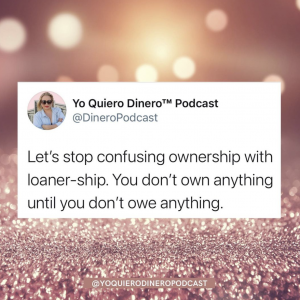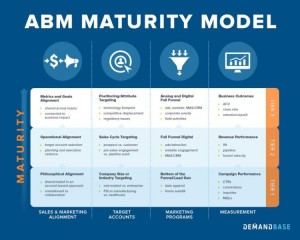By Sunny Bonnell and Ashleigh Hansberger
When Supreme Court Justice Potter Stewart was asked to describe his test for obscenity in 1964, he responded famously, “I know it when I see it.” We could say the same thing about vision and the corporate setting. Plenty of CEOs and other top executives may tell themselves they are visionaries, brand themselves as visionaries to others, and even attempt to guide the organizations based on their visions of the future, but what does that even mean? How do you know you’re a visionary leader?
We work with leaders every day to help them articulate their visions and put them into action, and two common narratives keep coming up with the leaders who are legitimately visionary.
First, they see themselves as aspirational, values-driven people who truly want a clear idea of where they’re taking the organization and its people for the next three, five, or ten years. They want to be ahead of trends, not get caught flat-footed by the competition and set the pace for their industries.
Second, visionary leaders focus a great deal on culture. Specifically, on something that we call a “Culture of Possibility.” A culture of possibility is daring, and creative, where new ideas flourish and come from every direction and every level. In a culture of possibility, the vision of a leader is infused into the air, water, and the DNA of how the organization operates. Everyone is open, questioning, and eager to challenge the status quo.
But how can you possibly know if you have what it takes to lead and grow a culture of possibility? No sensible leader relies on their own assessment of their own visionary qualities, since we’re all susceptible to self-gaslighting. As for subordinates, if we were in court, we’d object: “Motive to lie, or at least, to flatter.” You can’t even rely on results to confirm that you’re a visionary, because the early years of trying to steer an organization in a new, visionary direction can be chaotic—and often appear counterproductive as you and your people put new methods, tactics, and strategies in place.
Fortunately, you don’t have to rely on any of those measures to confirm your own visionary status. We’ve done it for you with a helpful matrix of nine traits we’ve boiled down from the hundreds of visionary (and wannabe-visionary) leaders we’ve worked with over the years. Our takeaway is this: If you possess at least five of these nine traits, it’s safe for you to think of yourself as being a visionary…or a visionary-in-waiting at the very least. No one possesses all nine, but if you’ve got seven of them, you just might be legendary.
Creative
Here, we’re going to reclaim this word. Creative doesn’t mean that you paint or sketch in your spare time or that you’re a designer or a writer. It means, quite simply, that you dream up things no one else is doing and find ways to take those ideas from mental construct to tactile reality. That’s creation. One day, something doesn’t exist. The next, it in your head. A few weeks or months later, someone can read it or see it or make phone calls with it. You’re burdened with the impulse to take things apart, tinker, and solve problems no one else wants to be bothered with.
Optimistic
Optimism is misunderstood. The cockeyed optimist is often seen as someone not living in reality, as though facing reality and getting things done means always assuming the worst. There’s nothing inherently useful or leader-like about pessimism. Pessimism doesn’t make you wise, and it doesn’t make you ready. In our experience, pessimism simply robs individuals and organizations of their spirit to get things done. To be fair, too much optimism leads to blindness or hubris—just as dangerous. But optimism in just the right measure is empowering for a leader. It makes the people you’re leading believe anything is possible, that you have a plan, and that when things go wrong (which they will) you will be focusing on how to fix them, not who to blame.
Daring
You can’t be a visionary in a vacuum. There are no vacuums. Whatever field of endeavor you’re working in, someone was there before you. Which means, in order to pursue a vision you will have to oppose someone or something that’s already established. You’ll have to dare to say, “I’m better than you. I have a better idea. I’m going to show you.” Visionary leaders relish the opportunity not so much to criticize or tear down the opposition or the status quo so much as to say: “Look what’s possible if you’re not afraid to ask questions no one else is asking.”
Inspiring
Great leaders don’t command. They don’t need to. They get their people fired up about big ideas, bigger challenges, doing work they love and being rewarded for it. They’re charismatic, even hypnotic. You’re not a charismatic speaker? No problem, because that’s not what we’re talking about. Inspiring people with your vision means articulating it in such a way that they can understand it and they can see their place in it. Everyone should have a role. Everyone should be able to see themselves grow along with your vision. If you can do that—whether you do it in a speech, a letter, or in your day-to-day actions—you will inspire people if they think the organization is about to take a great ride and they have a front-row seat.
Persuasive
No matter how brilliant your vision is, you’re going to have to sell it. There’s a sort of inverse law between vision quality and vision palatability. In other words, the more daring and potentially game-changing your vision is, the harder you’re going to have to sell it to people who are hardwired to be terrified of ideas that are truly revolutionary. So persuasive skill is key to building a coalition, from the top of the organization all the way down to the individual contributors who will be doing the work. Empathy, communication skills, persistence, and understanding of the natural human aversion to come into play here in a big way.
Confident
In pursuing a vision, you’re going to be hanging your ass, and your organization’s collective ass, out over the edge on the regular. Everyone who is nervous about that—which will be everyone—will be looking to you for reassurance. Are things going according to plan? Will the capital be there to fund your ideas? Is everything going to be okay? This is a “fake it till you make it” situation. Your confidence must be contagious. If you don’t feel it, pretend until you can feel it for real.
Obsessed
Obsession is a double-edged sword for a visionary leader. On one hand, you have to be obsessed with your vision, because no one else will be in the beginning. In order to develop it into something that can change the face of the organization, you’ll spend long nights and long hours mapping it out, getting into the weeds, and making sure everyone else understands it. But you can’t allow it to take over your life or prevent you from carrying out your other duties. Channeled in the right way, obsession is more than a trait that a visionary leader possesses; it’s also a marker of the quality and appeal of your idea. If you find a vision that drags you into obsession, you’ve found something extraordinary.
Adaptable
Things never go according to plan. Even if you’re just a few years out of business school, you know that. Plan A is just a polite suggestion. You need Plan B, Plan C, and, most important, the ability to think on the balls of your feet and adapt as conditions change. Perhaps funding dries up. Perhaps a prototype doesn’t work. Perhaps the market changes. Perhaps someone else gets your idea right first. Adaptability is about not having an ego; the vision is more important than you being right. If you can embrace that, and accept the fact that you have to change to meet the conditions, not the other way around, you can adapt to anything.
Resilient
Finally, you’re going to fail. Let’s just stipulate to that now. Just as every good Hollywood movie has a point where the characters have a dark night of the soul, your vision will drag you into the abyss at some point. There will be failures, defections, and blown budgets. When those happen, you can quit or you can keep going. If you have the grit to keep going, your people will follow.
(3)








